Hereford cattle are a large breed of South Africa's beef production. The origin of the Hereford breed is uncertain, but the breed seems to have developed from draught oxen descended from the small red cattle of Roman Briton and a large Welsh breed.
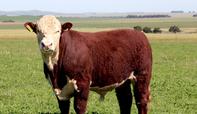
The breed takes its name from the Herefordshire County, a historic agricultural region of England where the breed evolved. It is one of the oldest English breeds, mentioned by various agricultural authors as far back as the early 1600s. Evidence exists that production records were kept by various individuals already around the 1700s, with high yield of beef and production efficiency being top priorities even then.
The Hereford Herd Book was opened in 1846, while the Hereford Cattle Society was founded in 1878. To ensure the purity of the breed, the Hereford Herd Book has been closed to any animal whose sire and dam had not been recorded up until 1886.
Production in South Africa
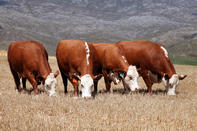
The first Hereford bulls were imported from England to South Africa in 1890. Sir Abe Bailey and GW Young are considered founders of the breed, as they imported large numbers of Herefords in 1903. The South African Hereford Breeders Society was founded in 1917, with Sir John Ray as the president.
The Arbor Hereford Stud is the oldest existing stud in South Africa, started by Charles Eustace in 1945, whereas Vicedale Herefords was the first South African Hereford herd, part of five breeds, to start official performance testing by the Department of Agriculture in Irene.
Attributes
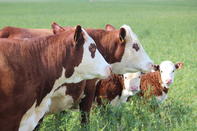
The Herefords of the 1700s were much larger than today, with records existing of one of the show bulls, Cotmore, weighing over 1760 kg in 1839, as recorded on the Cattle Site. Today, the size of the animal largely depends on production conditions, but the ones produced in South Africa are primarily medium-framed, with the average weight of cows ranging around 500 to 650 kg and bulls around 900 to 1100 kg.
Hereford cattle are red coloured with a characteristic white head, crest, underline, socks and tail switch. They can be polled or horned. They are early maturing and have the ability to convert low-quality forage into high-quality, high-yielding meat, which is also why they are internationally seen as “the breed that made grass famous.”
The adaptability of the breed and fertility of the cows are second to none. The South African Hereford had the lowest inter calving periods (ICP) of all major breeds, more than 1000 breeding cows, over the past two decades with the current national ICP being 388 days.
Production Regions
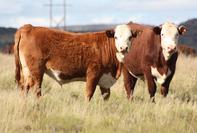
Herefords are adapted to perform under the most unpleasant climatic conditions and, therefore, are present throughout South Africa. They thrive from the cold Drakensberg and Eastern Cape winter conditions to the heat-stricken areas of Eswatini, the Karoo and the Kalahari. Nowadays, purebred herds can also be found in the heart water and red water areas of the Northern parts of South Africa, where immunity of such tick-borne diseases have successfully been established in those Hereford cattle.
Use
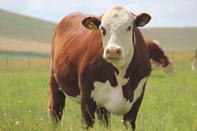
The breed may be used on their own in closed herds, but are in high demand in crossbreeding programmes because of their excellent maternal qualities, fertility, forage utilisation efficiency and the high level of heterosis achieved thanks to the purity of the breed.
They cross especially well with Zebu cattle for the warmer climates and with Angus for more temperate climates, as reported by SA Hereford. In fact, the Black Baldie cow (Hereford x Black Angus) is the most popular crossbred cow in the USA for commercial beef production.
Meat Quality
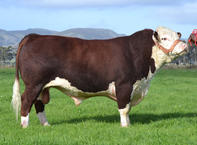
Besides their popularity in intensive feeding systems such as feedlots, the breed’s characteristics also make it possible to “fatten them” on natural and established pastures, so they can be truly sold as “grass fed.” Furthermore, the Hereford's distinctive whitehead is internationally a trait mark of quality for cattle farmers, feedlot operators and consumers.
For bulk or Hereford Beef export enquiries please use the enquiry link below.